| Radiation Inst. Main | Commercially Sold Meters | Two State RADEF Shops |
Photos From Two State Radiological Maintenance And Calibration Shops
In July of 2001 I visited the Texas Department of Health Radiological Instrument Calibration shop. Here are some photos from my visit. In 2002 Brian Lewis sent me some photos of the Iowa Radiological Instrument Calibration shop. He sent photos of the instruments in the calibrators so I included them on this page.
Texas Department Of Health Radiological Instrument Shop - July, 2001
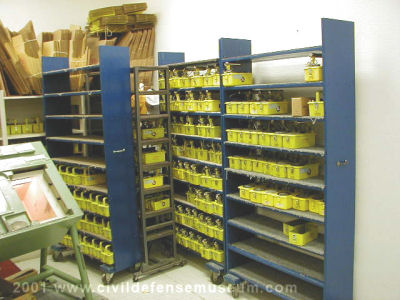 |
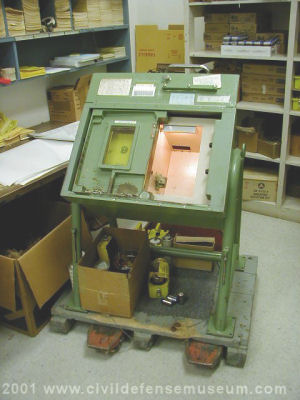 |
The TDH instrument shop was located in a strip shopping center in Austin Texas. The shop consisted of an office for the small staff and warehouse space to store the instruments. The above left photo shows the shelves of CDV-700s and CDV-715s ready for calibration. Their green CDV-794 high-range calibration unit is at the far left in the photo. The shop changed location shortly after this visit.
The above right photo shows the CD V-794 high-range calibration unit. This unit has a 130 curie Cesium-137 source inside of it and is heavily shielded. They used a pallet jack to move it around. This is used for calibration of the CD V-715 and CD V-717 high-range survey meters. The meter goes into the opening at the right of the unit. The door slides closed over the opening to shield the operator. Like a dope, I didn't even think about taking a picture of the unit with the door closed so the controls aren't visible in this picture.
Without thinking first, I asked one of the shop technicians if he had ever seen the source out of this unit. He replied "the only way I would ever want to see that source is through a pair of binoculars from far away."
The CD V-794 unit, at the time these photos were taken, was capable of exposing the meter that is being calibrated to a 390 Roentgen Per Hour dose of gamma radiation.
CD V-790 Low-Range Calibrator
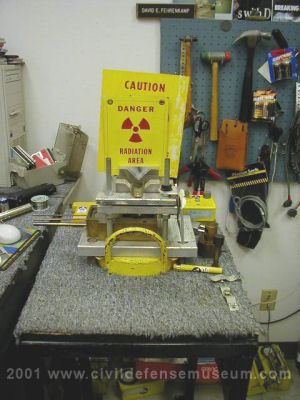
This is the CD V-790 calibrator that is used to calibrate the CD V-700. The calibration unit consists of a lead containter mounted into a table. There is a small radioactive source inside the lead container. The probe of the CDV-700 goes into the v-shaped clip (see other photo below) in the frame above the container directly below the Danger Radiation Area sign. There are 3 sliding attenuators that move into the path of the radiation coming out of the top of the lead container. The rods sticking out of the metal frame at the left are what move the attenuators. The various ranges of the meter are calibrated by moving each attenuator out of the way as needed to check each range of the meter. The technician calibrated my 700 while I was there. He first checked the geiger tube voltage after the meter warmed up for a few minutes. He then set the geiger tube voltage and calibrated the meter. He set the calibration adjustment and then checked the meter in all of it's ranges. The whole process only took a few minutes.
Iowa State Radiological Maintenance Shop - 2002
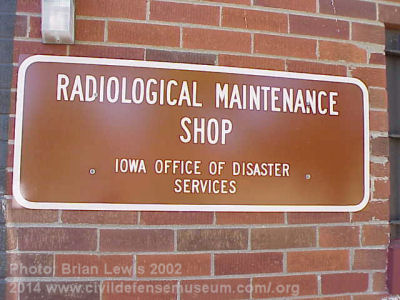
In 2002 I received an email from Brian Lewis with Iowa Emergency Management. He sent several pictures to me of their shop and some with the instruments actually in the calibration units. Thanks Brian! It only took me 12 years to get these pics up on the site. (oh brother!) As of early 2014 I don't know if Iowa still operates an instrument shop.
CD V-790 Calibrator With CD V-700
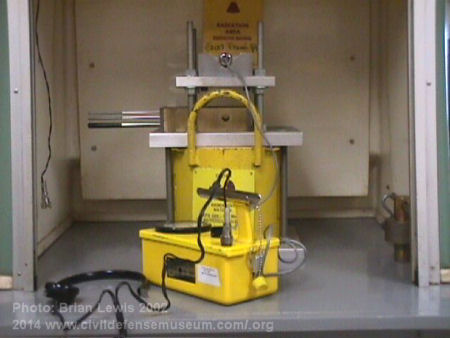
Here is the CD V-790 with the probe positioned in the calibrator. The probe is in the V-shaped block at the top of the unit. Click photo to see larger.
CD V-794 Calibrator With CD V-715
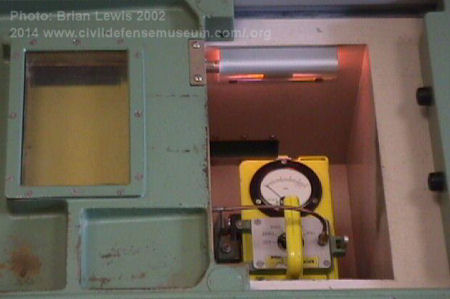 |
Here is the CD V-794 calibration unit. The above left photo shows it with the cover closed. The right photo show the CD V-794 with a CD V-715 mounted into the calibration bracket inside the unit. The door (with window at left in photo) is closed before any calibration is done and the CD V-715 has to be remotely operated via cables and links because of the high radiation levels. The remotely operated switch plate with cable can be seen over the top of the CD V-715 in the photo. Click photos to see larger.